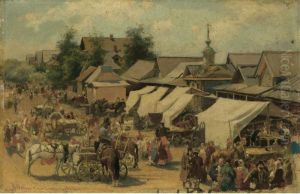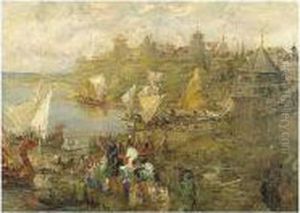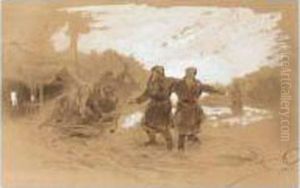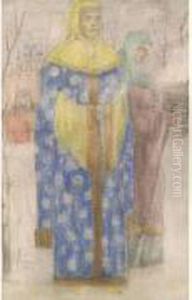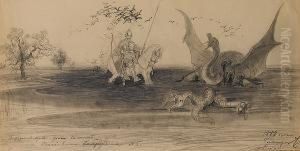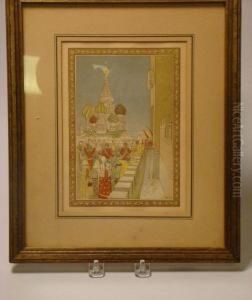Andrey Petrovich Riabushkin Paintings
Andrey Petrovich Riabushkin was a distinguished Russian painter, born on October 24, 1861, in the village of Stanichnaya Sloboda, Tambov Governorate, into the family of a master icon painter. This environment immersed him in the world of art from a young age. Riabushkin's early exposure to the traditional craft of icon painting, combined with his formal education, significantly influenced his artistic development. He studied at the Moscow School of Painting, Sculpture and Architecture before advancing to the Imperial Academy of Arts in Saint Petersburg, where he was a pupil of Pavel Chistyakov. Chistyakov, known for his rigorous academic standards, played a crucial role in Riabushkin's development, encouraging his interest in historical and folk subjects.
Riabushkin's work is characterized by a deep fascination with the Russian past, particularly the life of the Boyars during the 16th and 17th centuries. His paintings vividly recreate the era's atmosphere, costumes, and interiors, reflecting his meticulous research and love for history. Among his most famous works are "Walking the Streets of Moscow" and "Feast of Ivan the Terrible". These paintings showcase his talent for detail and ability to convey the spirit of bygone eras.
Despite his historical leanings, Riabushkin also captured the contemporary rural life of Russia with empathy and precision, often focusing on the lives of peasants. This duality of interests — the grandeur of Russia's past and the simple beauty of its present — distinguished his work from that of his contemporaries.
Riabushkin's career was relatively short; he died on May 6, 1904, in Saint Petersburg. However, his contribution to Russian art has endured, offering a unique window into the country's history and culture. His works are preserved in Russia's leading museums, including the Russian Museum and the Tretyakov Gallery, where they continue to inspire admiration and scholarly interest.
